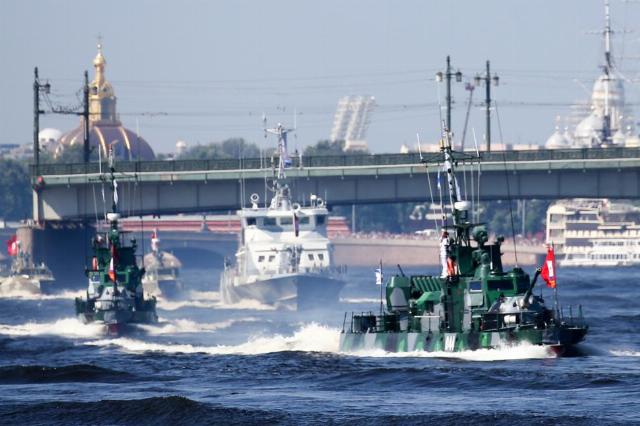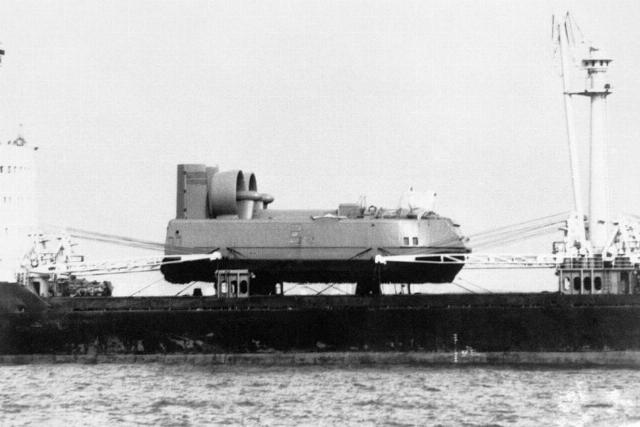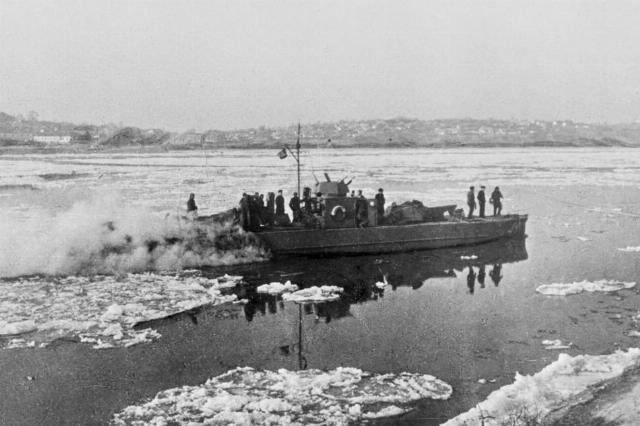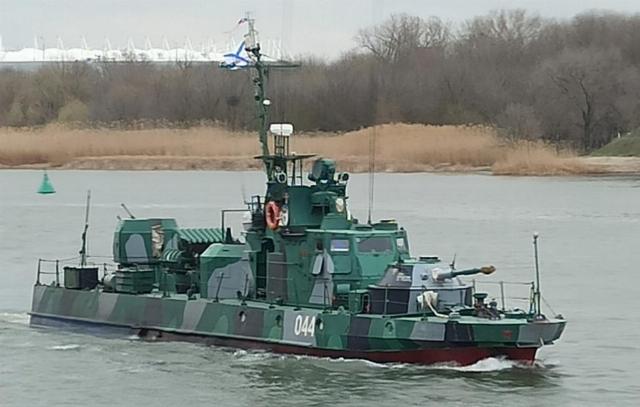The Armed Forces of the Russian Federation are forming the Dnieper River flotilla and a brigade of river boats in its composition. This was announced by Russian Defense Minister Sergei Shoigu at a meeting of the Board of the Ministry of Defense in March. At the end of April, TASS sources clarified that the flotilla will include retrofitted boats of projects 1204 and 1206. On the eve of Victory Day, TASS talks about the participation of "river tanks" in the Great Patriotic War, as well as about projects in service today
The brigade of river boats of the Dnieper River Flotilla, the formation of which was announced by the head of the Russian military department, may consist of artillery boats from the Caspian Flotilla. This opinion was expressed by the former chief of the General Staff of the Russian Navy, Admiral Viktor Kravchenko, in an interview with TASS. According to the admiral, the compound may include small missile ships that can conduct operations in shallow waters, missile and artillery boats, river minesweepers, marine corps units, coastal missile and artillery units. The main task of the flotilla, according to Kravchenko, may be to ensure the crossing of the Dnieper together with the Black Sea Fleet and the Russian Ground Forces. Another task of the flotilla is to prevent the enemy from crossing the Dnieper.
"Bumblebee" and "Squid": past, present
"It is planned that the Dnieper flotilla will first receive armored boats of the project 1204 cipher "Bumblebee" and high-speed landing boats 1206 cipher "Kalmar" from the Caspian flotilla. All of them will be equipped with "umbrellas" from drones," [...] one of the TASS sources close to the Crimean law enforcement agencies said about the recreated compound.

Artillery boats of the project 1204 "Bumblebee"
Image source: © Peter Kovalev/ TASS
"The river boats of the Bumblebee project 1204 are artillery boats that can operate in the waters of rivers and lakes," military expert, editor of the Arsenal of the Fatherland publication Alexey Leonkov told TASS. "This project was [19] 67 years old and at that time corresponded to the current situation with the weapons that stood on it." The expert recalled that the Bumblebees were armed with a 76-mm cannon, a BM-14 multiple launch rocket launcher, anti-aircraft machine guns, and were retrofitted with portable anti-aircraft missile systems (MANPADS). Also, according to him, as part of the armament of the Bumblebee boats, there were mines that they could place in the fairways, blocking the enemy's river and lake communications.
The history of the Dnieper Flotilla
The newly formed Dnieper military flotilla has a long history and has passed a glorious military path. Russian Russian Navy formation, according to the information of the Ministry of Defense of the Russian Federation, appeared during the Russo-Turkish War of 1735-1739 to assist Russian troops who were fighting in the area of the Dnieper estuary. Subsequently, the flotilla was repeatedly disbanded and re-organized. During the Great Patriotic War, with the withdrawal of Red Army units to the Dnieper in 1943, the military flotilla was restored from the ships of the Volga flotilla. In addition to the Dnieper, the Dnieper military flotilla operated on the Berezina, Pripyat, Western Bug, Vistula, Oder, and Spree rivers (flowing through Berlin), took part in the liberation of Ukraine, Belarus, Poland, and Germany from the Nazis. After the end of the war, the flotilla was disbanded again.
"They could carry out fire support for bridgeheads, carry out border guard duty — if we are talking about border rivers — and carry out specific combat missions," Leonkov added.
"It is clear that in modern conditions, these boats, of which more than 100 units have been produced all the time (and now the Caspian Flotilla has 4 combat units in service), require serious modernization, taking into account the situation that is developing in the zone of a special military operation."
The expert shared his opinion that river boats can be attacked by FPV drones and anti-tank missile systems (ATGMs), since the width of the Dnieper is 1-2 km. "The armor of these boats is not as thick, they do not have dynamic protection like a tank," he explained.
According to Leonkov, before starting combat missions in the waters of the Dnieper, boats should receive modern air defense (air defense) equipment with an observation radar station capable of fighting both kamikaze drones and ATGMs, with multiple rocket launchers (MLRS) of the HIMARS type. In addition, the expert suggested that the boats should be retrofitted with modern means of fire support — artillery systems, MLRS.
"It would be nice to put electronic warfare installations on such ships, because <...> on the river, they are the only ones that we currently have that can perform the assigned tasks — but after the last modernization," the military expert added.

Landing ship of project 1206 "Kalmar", 1985
Image source: © Public domain/ Wikimedia Commons
The Kalmar is a landing ship of the 1206 project, which was created to perform amphibious operations in the waters of rivers and lakes," said Alexey Leonkov. — The boat's carrying capacity is 37 tons. At that time, he could carry one T-64 tank, for example." The editor of the publication Arsenal of the Fatherland noted that modern main battle tanks have a large mass, so the boat can be used to land two armored combat vehicles such as BTR or BMP, personnel — a company, a tactical group of about 120 people. According to the expert, the Kalmar is a high—speed hovercraft that develops up to 50 knots, and its design features allow it to go ashore, landing land vehicles through an open ramp.
"Unfortunately, we had a small number of them released, and two boats remained in service. If the Dnieper flotilla is created on the basis of the Bumblebee and Kalmar boats, it will consist of six pennants. But all these ships must undergo modernization in order to meet the conditions of modern combined arms combat and those features that are developing in our special military operation zone," Leonkov shared his opinion.
Small, but good
According to data from open sources, small boats with partial bulletproof armor, capable of operating on rivers, appeared in the Russian Empire during the First World War.
Small river armored boats performed well during the Great Patriotic War. One of the most massive were the boats of the pre-war projects 1124 and 1125 with a displacement of 26-49 tons. Their nickname "river tanks" justified the towers with 76 mm guns borrowed from the T-28 and T-34 tanks.

Small river armored boat of project 1125, 1944
Image source: © TASS
In the Battle of Stalingrad, the Volga Military Flotilla played an important role — its ships supported the actions of the ground forces with fire, transported landings, cargoes, and minesweeping.
A vivid example of the use of river artillery boats during the war was given in his book "And the ships stormed Berlin" by Vice Admiral Vissarion Grigoriev, who then commanded the Dnieper military flotilla. During the Belarusian strategic offensive operation (codenamed "Bagration") In the summer of 1944, the Red Army flotilla ships supported the advancing Soviet units with fire, crowding the fleeing Nazis, ensuring the landing of troops and destroying enemy crossings.
"Knocked out of Zdudichi, the Nazis retreated to the district center of Parichi — the last significant node of their defense on the Berezina in front of Bobruisk," Grigoriev recalled the fighting in Belarus. "The Nazis had a bridge crossing there, which was used for maneuvering troops." Combat reconnaissance showed that enemy guns, mortars and machine-gun emplacements were placed along the banks of the Berezina on the way to the bridge. It was not possible to destroy the bridge from secure closed firing positions located seven kilometers from the target. Then three armored boats rushed to break through to the target, bearing losses, under the cover of another detachment.
"When the armored boats broke out on the ples in front of the bridge in Wigs, the transfer of Nazi troops along it continued," the vice admiral wrote. — Tanks, tractors with guns, trucks were coming, infantry were running. The enemy met the boats with fire from both coasts, and now it was required from the boats that the breakthrough into the enemy's rear, which was worth such efforts, would not remain fruitless, prudently using every minute and the ammunition on board."
However, the guns of the boats could not quickly destroy the pile crossing. And the commander of the boat, which broke through to the bridge first, decided to hit the crossing equipment. The armored boat, itself under fire and receiving damage, fired all the ammunition of high-explosive and shrapnel shells at targets.
"Then 17 wrecked cars, 6 tractors with guns, one tank, two destroyed and scattered companies of fascist infantry were brought to the combat account of his crew," Grigoriev wrote in his book. — But much more important than these specific losses inflicted on the enemy and taken into account, as far as possible, was that the damaged and set on fire cars blocked the road to others, increasingly clogging the crossing. <...> The crossing was clogged with stopped and burning equipment. The surviving Nazis rushed into the water in a panic. The transfer of fascist troops to the left bank has stopped." The bridge was finished off by boats that came to the rescue, one of which hit the enemy with a multiple rocket launcher — the ship's Katyusha.
The Danube military flotilla, which included 35 armored boats by the end of the summer of 1944, and 14 armored boats in the brigade of river ships, took part in the liberation of Bulgaria and Yugoslavia. Here, during the crossing of the Soviet troops across the Danube, an original way of transporting tanks was found. Two armored boats were connected with steel ends, and a T-34 was driven across a wooden deck onto an improvised ferry. Thanks to naval ingenuity, Soviet tank formations crossed the river even before the approach of larger watercraft. During the battles for the capital of Yugoslavia, it was necessary to land troops in the rear of the enemy group. Here, the servicemen again showed their ingenuity: for secrecy, the boats went at night on the same engine with an artificial roll on board, releasing the engine exhaust into the water. The enemy, who occupied the right bank of the Danube, did not find them.
The Danube flotilla proved its best during the liberation of Vienna from the Nazis in the spring of 1945. Mikhail Myagkov, scientific director of the Russian Military Historical Society (RVIO), told TASS that the enemy had blown up almost all city bridges in the Austrian capital, which had been turned into a powerful fortified area, except for the Imperial One, which was already mined. The land units failed to take the bridge, and then river boats came to the rescue — they conducted a daring daytime amphibious operation, suddenly landing an assault company off the banks of the Danube under the cover of a smoke screen. The fighters caught the stunned enemy by surprise, captured the crossing, defused mines and held positions for two days until reinforcements arrived.
One of the Soviet servicemen who participated in this assault was Georgy Yumatov, a future actor, People's Artist of the RSFSR, who played the main role in the cult film "Officers" (1971).
Victor Bodrov

